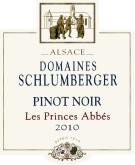History
It is undoubtedly the first pinot grape variety imported from Burgundy, no doubt because of the similarities in topography and climate between Burgundy and Alsace. This prestigious red grape variety was prominent in Alsace in the middle Ages, but then disappeared, except for certain places where red wine was still appreciated. It is becoming increasingly popular today because of its freshness and fruitiness
Location
60% comes from the limestone Bollenberg plot and 40% comes from the marl-limestone Grand Cru Saering plot.
Wine-making
Its vinification occurs during a maceration of two weeks. Its growth in traditional tuns for 10 months allows adding a more full-bodied and more complex structure to its typical fruitiness. Bottled in June 2011 after a very slight filtration.
Gastronomy
- Country terrine
- Joint of pork with sautée potatoes
Serve at 16°C.
Learn more about food & wine pairingTasting
The robe is dark garnet-colored, with a beautiful intensity. The disk is bright, limpid, with purple reflections.
The nose is open, intense; it is based on red fruits, cherry pulp, blackberry and red current. Airing enhances the cherry character and one finds again the red current notes.
In the mouth, the onset is fresh, marked by a slightly sparkling note. One evolves on a medium with a frank vivacity. The range of flavors is based on red fruits, cherry, blueberry, blackcurrant and blackberry. The tannins are already subtle and pleasant.
The finish shows a length marked by the freshness of the vintage with a pure, distinguished and fleshy side of the well ripe fruit.














